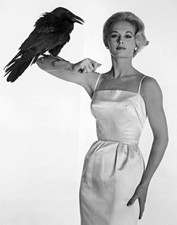Birds in the News #24

Spix's Macaw, Cyanopsitta spixii,
painting by artist Elizabeth Butterworth (2000).
Birds New to Science:
Have you ever seen a bird that was not listed in your bird field guide? Sometimes, ornithologists do, too. Two new bird species have been described from the Cordillera Central mountains of Colombia, both of them are tapaculos in the genus Scytalopus. The first observation, published in The Auk (122:445–463), is a bird that was christened, Stiles’s Tapaculo, Scytalopus stilesi. The second new species that was identified is the Upper Magdalena Tapaculo, S. rodriguezi. "It was frustrating, waiting for years knowing there were new species to be discovered and protected", says Paul Salaman of Fundación ProAves, one of the expedition members who describes the Upper Magdalena Tapaculo in the Bulletin of the British Ornithological Club (125:93–108). Some taxonomists regard Scytalopus tapaculos as the most complicated of all Neotropical genera. Voice is the most important aid to their identification, and study of birds in the northern Andes has already led to the description of three new species, and the elevation of several former subspecies to specific level in Ecuador.
People Helping Birds:
American Bird Conservancy and the Colombian conservation group, Fundación ProAves, announced the establishment of the first South American reserve for a songbird that breeds exclusively in North America, the Cerulean Wood-Warbler, Dendroica cerulea, a striking bright blue and white migratory bird that has experienced significant population decreases in recent years, mainly due to loss of habitat on both its nesting grounds in North America and wintering grounds in South America. "This Cerulean Warbler reserve is a ground-breaking step in the conservation of migratory song birds" said Mike Parr, Vice President for Communications at American Bird Conservancy. The new reserve also contains three Critically Endangered bird species along with many other threatened and endemic birds. (click here to see gorgeous images of the Cerulean Warbler and click here to see a map of the Cerulean Warbler's winter, migration, and breeding ranges, together with the location of the new reserve.)
In a rare good news story for Iraq, Nairobi-based United Nations Environment Programme (UNEP) said their latest satellite imagery showed the ancient Iraqi marshlands drained by Saddam Hussein as punishment against their occupants are back to almost 40 percent of their former level. These marshlands are important refueling sites for migratory birds. "The near total destruction of the Iraqi marshlands under the regime of Saddam Hussein was a major ecological and human disaster, robbing the Marsh Arabs of a centuries-old culture and way of life as well as food in the form of fish and that most crucial of natural resources, drinking water," said Klaus Toepfer, UNEP Executive Director. National Public Radio story and podcast.
The only known Spix’s Macaw, Cyanopsitta spixii (Critically Endangered), in the United States was returned to a zoo in Brazil, where it will be transferred to the Spix’s Macaw captive breeding programme in Recipe. The male bird, known as 'Presley', was illegally smuggled into the US at least 25 years ago and kept as a household pet in Colorado. Despite his age it is hoped that it still might be possible to pair Presley with a receptive female. The last remaining wild Spix's Macaw has not been seen since 2001 and is thought to have perished. [Spix's Macaw is pictured at top.]
Ivory-billed Woodpecker News:
After analyzing more than 18,000 hours of recordings from the swampy forests of eastern Arkansas, researchers at the Cornell Laboratory of Ornithology at Cornell University have released audio recordings offering further evidence -- including the legendary bird's distinctive double knock -- for the existence of the ivory-billed woodpecker, once thought extinct. These sounds were recorded in the same area of Arkansas where the species was rediscovered in 2004. National Public Radio story and podcast.
Birds in the Media:
Featured this week on BirdNote are the Clark's nutcracker, Nucifraga columbiana; the comeback of the purple martin, Progne subis; the chorus line of the Bonaparte's gull, Larus philadelphia; Birdwatching 102 -- what do you look for?; and woodpeckers love ants. BirdNote shows are two-minute vignettes that incorporate the rich sounds of birds with stories that illustrate the interesting — and in some cases, truly amazing — abilities of birds. BirdNote can be heard Monday through Friday, 8:58-9:00AM, throughout Western Washington and Southwest British Columbia and is also available as RSS/Podcast feeds.
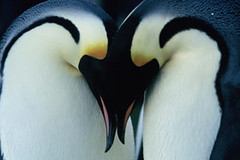 Is March of the Penguins too lovey-dovey to be true? Some scientists are criticizing the surprising hit movie March of the Penguins for portraying the Antarctic seabirds almost as tiny, two-toned humans. The poster for the surprise hit film reads, "In the harshest place on earth, love finds a way." And the movie describes the annual journey of emperor penguins, Aptenodytes forsteri, to their breeding grounds as a "quest to find the perfect mate and start a family" against impossible odds. But is this love? "In a way, the film anthropomorphized the lives of the penguins, but I think it's OK," says marine biologist Gerald Kooyman, who studies penguins at Antarctica's "Penguin Ranch". "Simplifying some aspects of the penguins' life story makes it more accessible to the general public." GrrlScientist wonders: What is love?
Is March of the Penguins too lovey-dovey to be true? Some scientists are criticizing the surprising hit movie March of the Penguins for portraying the Antarctic seabirds almost as tiny, two-toned humans. The poster for the surprise hit film reads, "In the harshest place on earth, love finds a way." And the movie describes the annual journey of emperor penguins, Aptenodytes forsteri, to their breeding grounds as a "quest to find the perfect mate and start a family" against impossible odds. But is this love? "In a way, the film anthropomorphized the lives of the penguins, but I think it's OK," says marine biologist Gerald Kooyman, who studies penguins at Antarctica's "Penguin Ranch". "Simplifying some aspects of the penguins' life story makes it more accessible to the general public." GrrlScientist wonders: What is love?Avian Zoonotics News:
The United Nations agency said a donation by Swiss drug maker Roche of enough of its Tamiflu antiviral to treat 3 million people could slow the spread of the outbreak among humans, especially in countries too poor to afford their own stockpile.
With all the international worry about the projected mortaility for humans, what about bird mortality? The very informative BirdLife Avian Influenza Position Statement is based on the best information available about birds and Avian Influenza as of 25 August 2005.
With more than a half million acres of lush rice fields in Northern California, rice farmers and the California Rice Commission began preparing several years ago for the arrival of West Nile virus. Historically, sections of the Sacramento Valley have been covered with wetlands and marshes -- the perfect habitat for mosquitos. Records of the insect's abundance in the Valley go back to the Gold Rush era. Of concern now, however, is the introduction of a new pathogen to humans, horses and birds that is transmitted by feeding mosquitoes.
This interesting story discusses the relationship between West Nile virus and its mosquito vectors (free registration required). It also includes contact information for reporting dead birds in California and prevention tips. If you are interested to monitor the latest news about West Nile virus activity in the state of California, bookmark this webpage provided by the State of California. It is updated every Friday.
Mysteries:
Imagine this; it is the early 1940s, America is involved in World War II, and you wish to hide hide fossilized dinosaur tracks -- how would you do it? Well, you could hide it in plain sight by putting plaster around the sides of the fossil footprints, painting the whole thing a whimsical muddy red, take it to Brooklyn College in New York and bolt it to a classroom wall with an unadorned case, where they were recently discovered. This was the choice of Roland T. Bird, a Harley-riding excavator who dropped out of junior high school and worked as a cowboy before barnstorming the country on his motorcycle showing archaeological finds for the American Museum of Natural History. Unfortunately, because Mr. Bird died a long time ago, no one knows where the tracks came from, nor why they were hidden at Brooklyn College.
Avian Miscellany:
The Aquatic Warbler, Acrocephalus paludicola, is the rarest songbird in mainland Europe. Its numbers declined by 95 percent during the 20th century because its marsh and wetlands habitats were drained for agriculture. But this rarity is not for lack of effort on the warbler's part. Over the last fifteen years, researchers investigating the sex life of this small, retiring brown bird have uncovered a pattern of promiscuous behaviour, with male birds "continuously ready to mate and testing every female for her willingness to copulate". Almost two-thirds of all broods of young Aquatic Warblers have more than one father.
Climate change is being blamed for alterations in the number and distribution of birds in Britain, and more changes are expected, according to a report published a week ago, Friday. Milder winters have pushed bird populations eastward and could result in new bird species being found in Britain, The State of UK Birds 2004 report found. "It is now clear that we must adapt the recovery plans for our threatened bird life to take account of the likely effects of climate change on our rural and coastal landscapes," said Phil Grice of the English Nature group, which contributed to the report.
Many thanks to my bird pals, Ron, Ian, and Ellen for some of the links you are enjoying here. Thanks to Ian for corrections to this document.
Previous : : Birds in the News : : Next
Academic Job News: Finally! I learned that my position is formally known as a "Substitute Assistant Professor". It is full-time but temporary, and is renewed on a semester-by-semester basis for a total of four semesters. I presumably have a job for two semesters. This position does not support any research activities, nor does it provide medical/dental insurance, sick leave, vacation pay, and it does not make payments into Unemployment Insurance benefits, which means that the next time I end up unemployed (think; Christmas "vacation", etc.), I could be on welfare (provided of course, that I qualify for it). Additionally, the department chair doubts that I will be interviewed for the evolutionary biology position that they are seeking to fill next spring. Needless to say, that very same night, I suffered a panic attack while I was asleep. It was my first, and hopefully, my last.
© 2004, 2005, 2006 by GrrlScientist
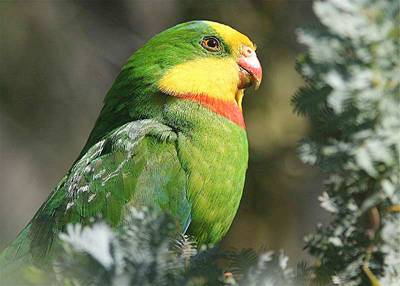
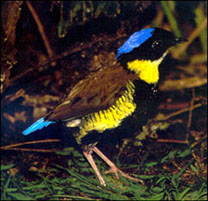 Visitors to Britain’s biggest bird event – the 17th annual
Visitors to Britain’s biggest bird event – the 17th annual 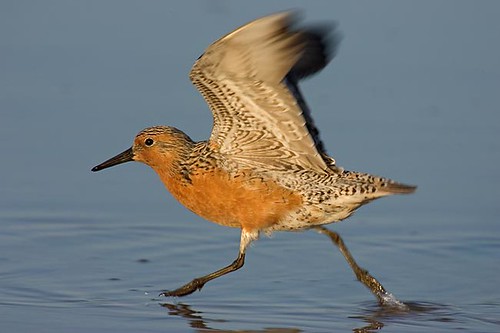
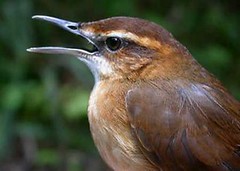
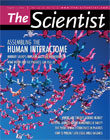


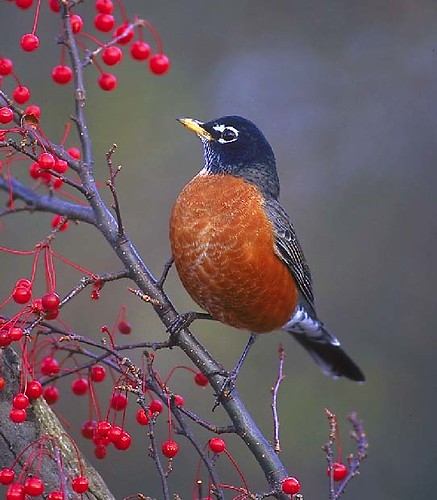
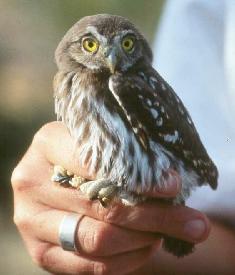 The U.S. Fish and Wildlife Service announced that it will propose the removal of the
The U.S. Fish and Wildlife Service announced that it will propose the removal of the 